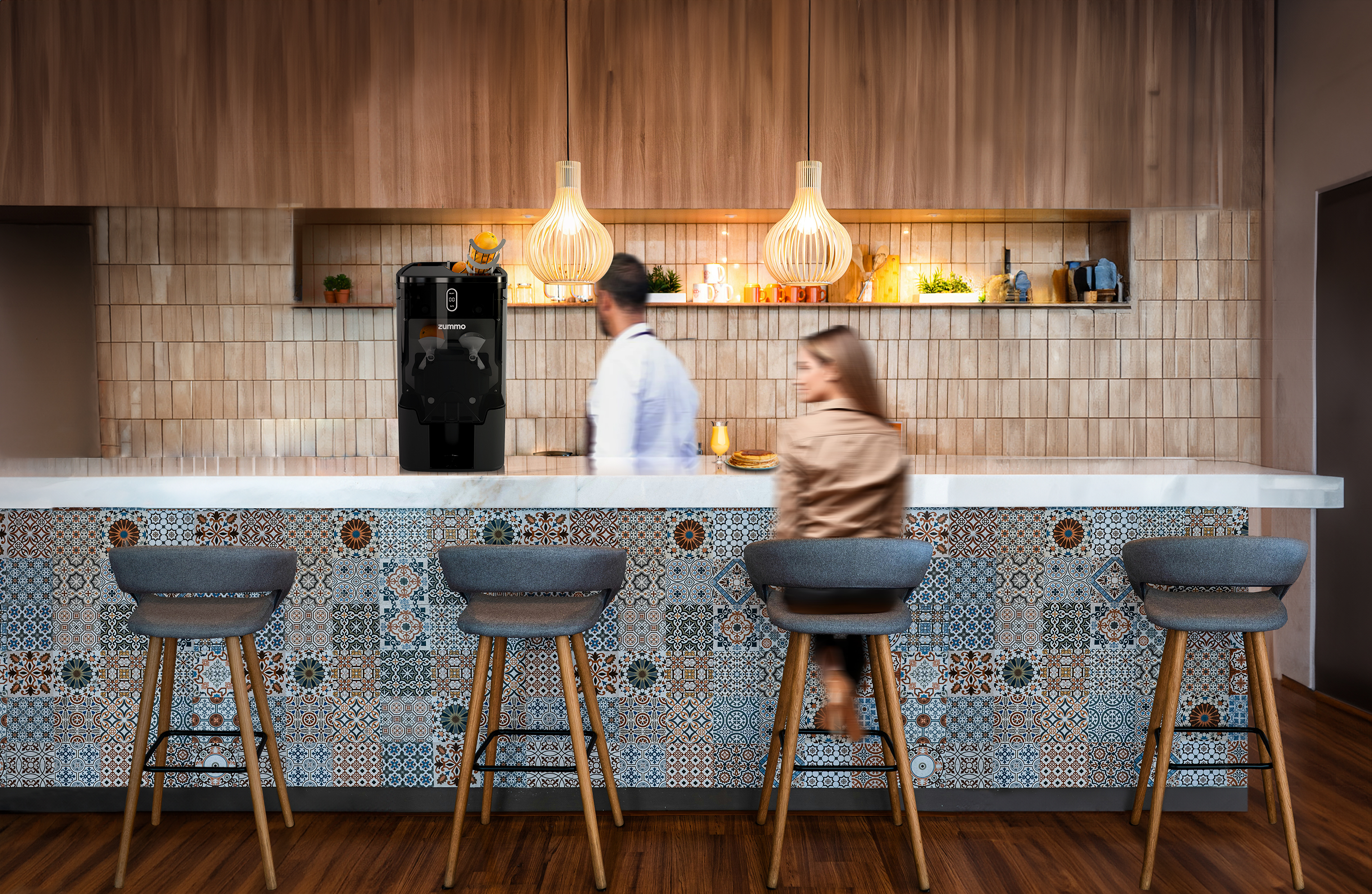Why is Organizing the Bar Counter Important?
Avoiding chaos and addressing customer needs quickly and effectively is essential for a business to run smoothly. Order and cleanliness are the foundation of success in the hospitality industry. Not only does this benefit customers, but it also ensures workers' well-being, allowing them to focus on serving guests properly without being distracted by a disorganized bar.
Impact on Service Efficiency and Customer Satisfaction
A well-organized bar significantly enhances service efficiency, leading to greater customer satisfaction. According to an article in the Harvard Business Review, proper workspace organization can reduce service times by up to 15%, increasing productivity and improving the customer experience. A good bar design not only optimizes workflow but also improves staff ergonomics, reducing stress during peak business hours.

Space Optimization and Workflow
The proper arrangement of key elements at the bar is essential to avoid unnecessary movements and ensure that staff have everything at hand. The Cornell Hospitality Innovation Center suggests that an efficient bar design can reduce staff fatigue and improve overall business efficiency.
Having well-defined zones, such as the popular “Coffee Corner” or “Fresh Corner,” helps create organizational schemes that enable employees to quickly and accurately locate needed items.
Essential Elements to Organize a Bar Counter
Basic Tools and Equipment That Cannot Be Missed
A bar or café counter must be equipped with the right tools to ensure fast and efficient service. Basic equipment includes professional coffee machines, automatic juice extractors, cocktail shakers, and blenders.

Machines for Preparing Beverages
For bars and cafés that serve coffee, a high-end coffee maker is essential. It should be located near the customer service area so that baristas can quickly fulfill orders. Automatic juice extractors, such as those manufactured by Zummo, should be placed in an accessible and visible area, optimizing space while also instilling customer confidence in the freshness of the product.
Appropriate Glassware for Each Type of Beverage
Keeping glassware organized by beverage type is vital. Studies by the Institute of Food Technologists (IFT) indicate that the proper arrangement of glasses and cups improves efficiency, as staff do not waste time searching for the correct type of container.
Stock and Beverage Organization
Tips for Proper Alcohol Storage
Alcohol should be stored efficiently, with quick access to the most-used bottles, such as vodka, gin, or rum. A well-organized bar dedicates upper storage space to less-used bottles while keeping the most popular ones within easy reach.

Distribution of Popular Beverages
The distribution of beverages at the bar should be strategic. According to a study by the Harvard Business Review, bars that organize their products based on usage frequency see a 15% reduction in drink preparation time.
Functional Design: How to Optimize Bar Space
Key Areas: Work, Storage, and Cleaning Zones
A well-thought-out design should be divided into three key zones: the work area (where drinks are prepared), the storage area (where beverages and ingredients are kept), and the cleaning area. The Food and Beverage Association recommends that these areas be clearly defined to avoid staff collisions and improve workflow.

Ergonomic Design Tips to Prevent Staff Fatigue
An ergonomic design prevents fatigue and repetitive strain injuries, which are common among bar staff. Countertops should be at an appropriate height so that staff do not need to bend or stretch continuously. The American Society of Industrial Design recommends countertops between 90 and 110 cm high, depending on the task.
Bar Organization with Professional Equipment
Professional Coffee Machines
Professional coffee machines should be placed strategically near the customer service area. This allows for quick service without interference with other bar areas. Studies by the European Coffee Brewing Centre indicate that the proper placement of the coffee machine can improve service time by up to 10%.
It is important to organize all ingredients, such as milk, syrups, sugar, and filters, near the coffee machine. Additionally, having separate zones for cold and dry ingredients facilitates organization.
Professional Juice Squeezers
Automatic juice extractors, like those by Zummo, should be placed in a visible area for customers, as this can enhance the perception of freshness. They should also be located near fresh ingredients to ease access during preparation.
An area near the extractor should be allocated for staff to quickly prepare fruits, optimizing the time between preparation and serving juice. The Journal of Foodservice Business Research suggests that a well-arranged fruit preparation station improves workflow by 15%.

Ice Cream or Milkshake Machines
Ice cream or milkshake machines should be located near the service area, with sufficient space for proper cleaning. This is crucial for maintaining hygiene standards and avoiding cross-contamination.
Common Mistakes When Organizing a Bar Counter (and How to Avoid Them)
Lack of Access to Frequently Used Tools
One of the most common mistakes is placing essential tools or ingredients in hard-to-reach locations. This increases service times and staff fatigue.
Excess Storage in the Work Area
Excessive storage in the work area can cause chaos and slow down service. It is recommended to store only what is necessary for each shift.
Not Utilizing Vertical Spaces
Using shelves and vertical spaces is an efficient way to maximize space in a small bar, freeing up room in work areas.






